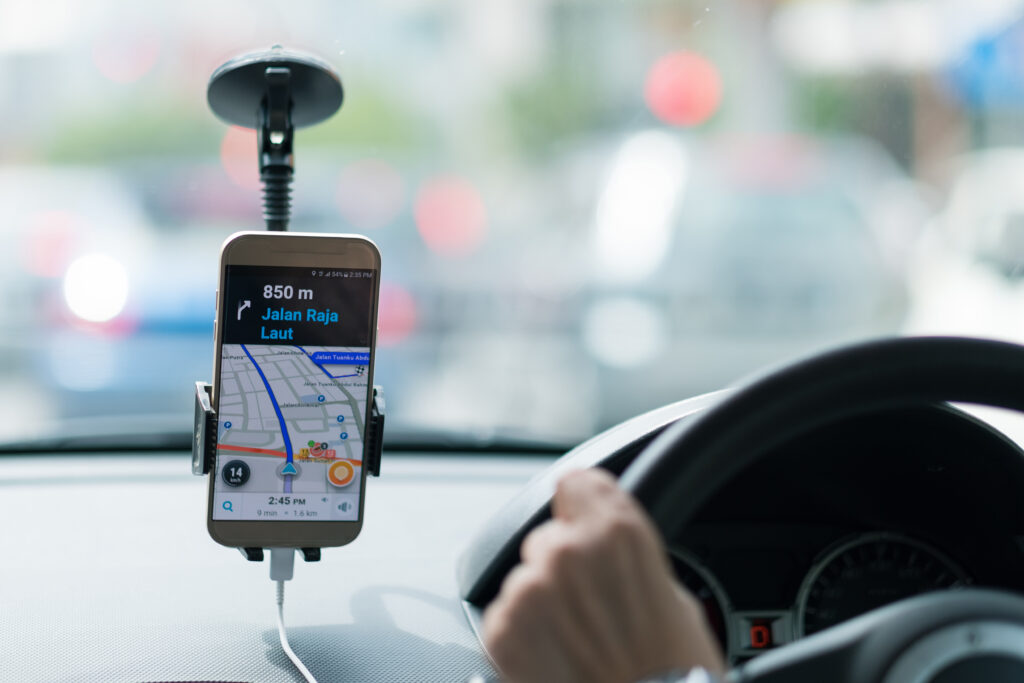The AI and Big Data Revolution: Powering the Future of Mobility Businesses
The mobility sector is experiencing explosive growth, with the MaaS market projected to reach a staggering USD 70.4 billion by 2030. Fueled by a growing demand for convenient, efficient, and personalized transportation options, the industry is witnessing a surge in innovation.
Players are leveraging the immense potential of AI and big data to revolutionize the way we move. Hence, creating a future of smarter, more efficient, and customer-centric mobility solutions.
Gone are the days of static maps and rigid schedules. Today, AI and big data are driving the development of intelligent transportation systems. This blog delves into how AI and big data are reshaping the way we move, offering significant benefits for both businesses and users.
Efficient Fleet Management and Route Optimization with AI
Smarter Driver Allocation
Gone are the days of simply matching the closest driver. AI analyzes various factors like driver skill, ratings, and estimated travel times. This ensures:
- Passengers get the right driver: Experienced drivers handle specific needs like airport transfers, and highly-rated drivers cater to premium requests.
- Faster pickups and fewer cancellations: By considering potential delays, AI ensures timely arrivals and minimizes passenger inconvenience.
Dynamic Route Adjustments
Traffic jams are no longer an unwelcome surprise. AI utilizes real-time traffic data to:
- Identify congested roads and suggest alternative routes: This saves drivers and passengers time and fuel.
- Predict traffic patterns: Based on historical data and current trends, AI anticipates future congestion and recommends routes accordingly.

Predictive Maintenance
AI takes a proactive approach to vehicle maintenance by analyzing sensor data to:
- Monitor engine performance, tire pressure, and oil levels: This allows for early detection of potential issues before breakdowns occur.
- Predict component failure: Based on usage patterns, AI can suggest maintenance schedules based on actual wear and tear, optimizing costs and minimizing downtime.
Other Benefits
- Reduced operational costs: Optimized driver allocation, efficient routes, and predictive maintenance minimize fuel consumption, labor costs, and downtime.
- Improved customer experience: Faster pickups, shorter travel times, and fewer cancellations lead to a more convenient and reliable service for passengers.
- Enhanced driver satisfaction: Efficient allocation reduces waiting times and ensures fair workload distribution, improving driver experience and retention.
- Increased fleet lifespan: Early detection and prevention of maintenance issues extend the life of vehicles, reducing overall fleet replacement costs.
Dynamic Pricing and Demand Prediction
Imagine a world where ride-hailing prices adjust seamlessly based on real-time demand, ensuring fair costs for customers and sufficient incentives for drivers. This is the power of AI in action, playing a crucial role in:
Dynamic Pricing
- Real-time adjustments: AI algorithms analyze factors like demand, location, time of day, and traffic patterns to adjust prices dynamically. This ensures that prices reflect market conditions and helps businesses maximize revenue while remaining competitive.
- Surge pricing: During peak periods with high demand, AI can automatically implement surge pricing, ensuring sufficient driver availability and incentivizing drivers to take on rides.
Also Read
The Rise of Voice Search in Mobility Apps: Catering to Gen Z’s Demands for Seamless Journeys
Demand Prediction
- Forecasting future demand: AI analyzes historical data and current trends like weather, events, and holidays to predict future demand levels in specific locations and at specific times. This helps businesses strategically allocate resources, including drivers, to meet anticipated demand and avoid service gaps.
- Optimizing driver availability: Based on predicted demand, companies can use AI to optimize driver availability and incentivize them to be online during peak hours, ensuring enough drivers to meet customer needs.
Enhanced Customer Experience
The landscape of the mobility business is undergoing a significant transformation, driven by a focus on creating a more personalized and seamless customer experience. Gone are the days of generic ride-hailing options — customers now expect tailored services that cater to their individual needs and preferences. In this quest for customer satisfaction, AI has emerged as a powerful tool, enabling businesses to:
Personalized Recommendations
Imagine opening your ride-hailing app and seeing not just a blank map, but a suggestion for your most frequent destination, based on your past travel patterns. This is the power of AI in action.
- Smart route suggestions: By analyzing your past ride history and preferences (e.g., avoiding tolls, prioritizing scenic routes), AI can suggest routes that align with your individual needs, saving you time and making the journey more enjoyable.
- Estimated travel times tailored to you: Traffic is unpredictable, but AI can help. By analyzing real-time traffic data and factoring in your preferred routes, AI generates personalized estimated arrival times, keeping you informed and reducing anxiety.
- Driver recommendations based on your preferences: Do you value a chatty ride or prefer a quiet driver? AI can analyze user reviews and driver ratings to recommend drivers who best match your preferences, ensuring a pleasant and comfortable experience.
By leveraging AI in these ways, your business can:
- Create a personalized and convenient experience for each customer.
- Foster customer loyalty and satisfaction.
- Stand out from competitors by offering a unique and valuable service.
Enhanced Safety and Security with AI
1. Real-time Fraud Detection
Fraudulent activities, like fake accounts or unauthorized access, can pose a significant threat to the integrity of your platform. AI is combating these issues with:
- Automated anomaly detection: AI algorithms analyze real-time data on user activity and payment methods. This allows for the identification of suspicious patterns, such as unusual login attempts or attempts to use stolen payment information.
- Risk assessment and flagging: When anomalies are detected, the system can automatically flag these instances for further investigation, allowing your team to take swift action and prevent potential fraud.

2. Proactive Driver Behavior Monitoring
Promoting responsible driving habits is crucial for passenger safety. AI is making a difference by:
- Analyzing driving data: Sensors in vehicles can collect data on factors like speeding, harsh braking, and sharp turns. AI analyzes this data in real-time, identifying potentially risky driving behavior.
- Personalized feedback and training: Based on the collected data, AI can generate personalized feedback for drivers, highlighting areas for improvement and encouraging safer driving practices.
- Early intervention: In extreme cases, the system can even trigger alerts or notifications to warn drivers of their behavior, allowing them to correct their course and prevent accidents.
By leveraging these technologies, your business can:
- Reduce the risk of fraud and unauthorized activities.
- Promote responsible driving and enhance passenger safety.
- Build trust and confidence among your users.
How crucial is AI in enhancing mobility today?
The shared mobility revolution thrives on connecting riders and earners in a highly scalable marketplace. Riders seek reliable, cost-effective, safe, and personalized journeys, while earners aim to optimize their time, earnings, and work experience.
Recent advancements in network speeds and computational power have unlocked the potential of Artificial Intelligence (AI) to analyze vast data sets and make informed decisions in real-time, drastically improving the mobility landscape.
AI acts as the engine of this transformation, utilizing large-scale data to power critical functions.
- Demand forecasting: AI predicts future demand patterns, allowing businesses to strategically allocate resources and ensure enough mobility options are available to meet customer needs.
- Enhanced ETA/ETD accuracy: AI estimates arrival and departure times with greater confidence, providing riders with a more reliable and predictable experience.
- Personalized recommendations: AI learns individual user preferences and suggests mobility options tailored to past trips and real-time situations, creating a more convenient and satisfying journey.
- Elevating safety: AI listens and reacts to events in near-real time, continuously learning from patterns to proactively enhance safety measures.
Also Read
How to start your shuttle business in 2024: Challenges, Trends and Solutions
The diverse nature of urban infrastructure and regulations across cities necessitates AI and Machine Learning for a seamless experience.
Traditional, one-size-fits-all approaches wouldn’t suffice. AI, with its ability to adapt and learn at scale, ensures that riders across all markets benefit from an Uber-grade experience, regardless of their location.
In essence, AI empowers the shared mobility ecosystem by analyzing vast data sets, predicting demand, personalizing journeys, and enhancing safety, ultimately creating a more efficient, convenient, and secure experience for both riders and earners.
Beyond Efficiency: A Frictionless Experience
AI goes beyond optimizing logistics and traffic flow. It is transforming the way we interact with transportation services.
- Seamless Booking and Payment: AI-powered chatbots and virtual assistants can handle booking requests, answer questions, and facilitate secure payments, creating a frictionless and convenient user experience.
- Integrated, Secure Mobility: Today’s mobility solutions go beyond transportation, offering commitment-free, contactless options while ensuring vehicle safety through:
- AI-powered systems that monitor vehicle health and driving style.
- Real-time collision detection systems.
The Road Ahead: A Brighter Future for Mobility
As AI continues to evolve, the future of mobility takes shape globally. By embracing these technologies and addressing potential concerns responsibly, businesses can create efficient, sustainable, and user-friendly transportation solutions, shaping a brighter future for the way we move.
This revised version combines the best aspects of both sections and reorganizes the information for a smoother flow. It also removes unnecessary information and focuses on the key points.




